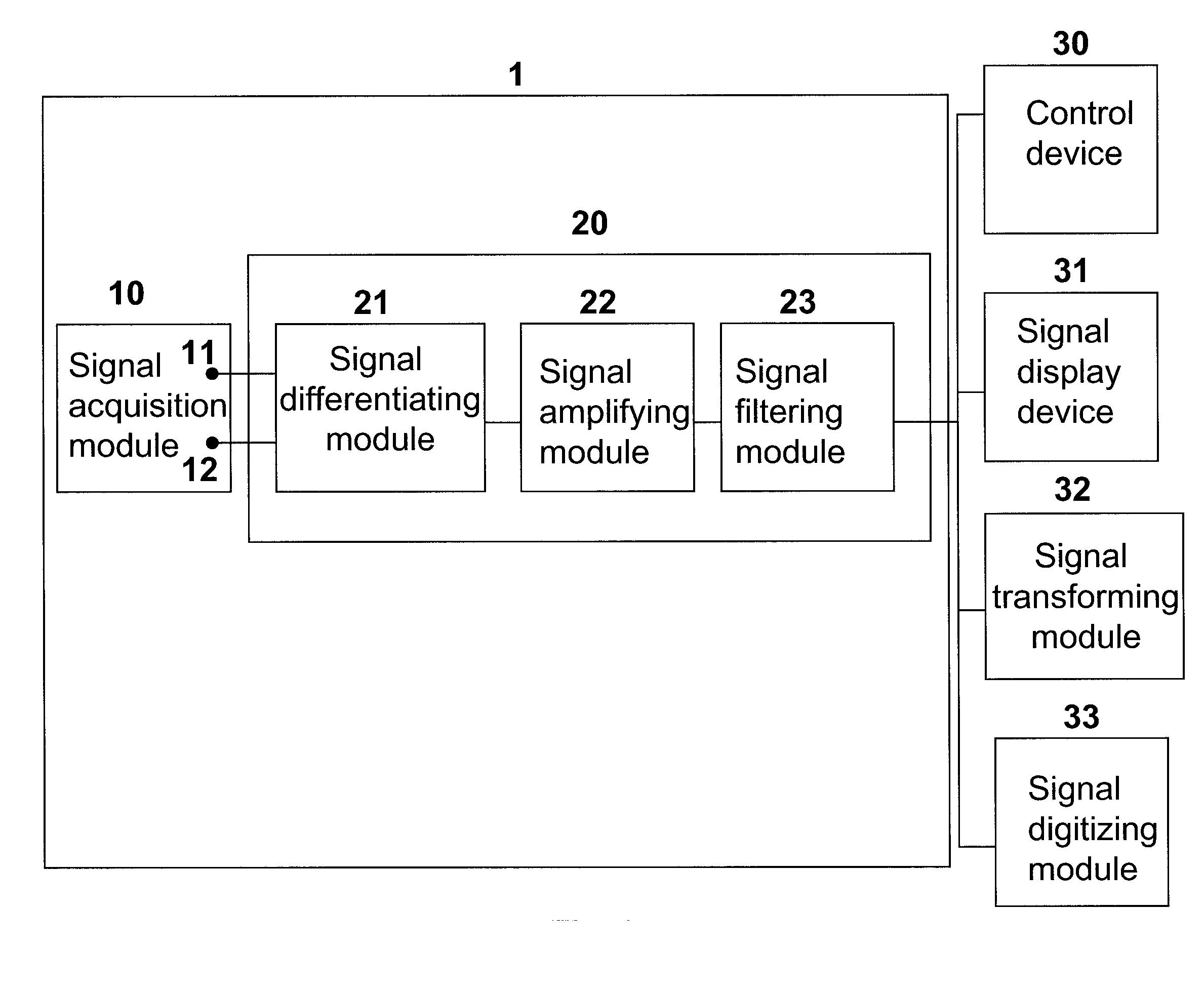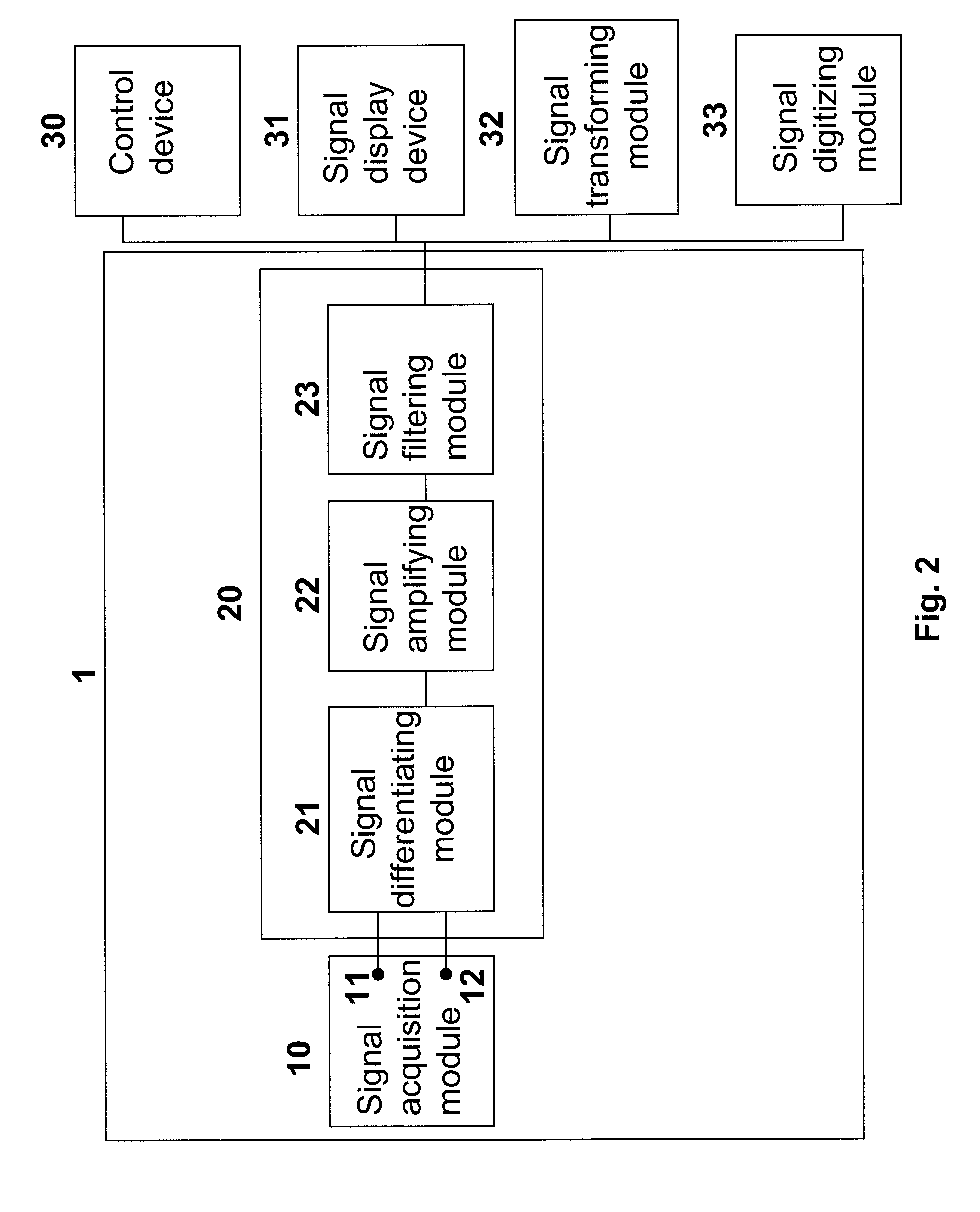Sensor Device for Detecting LEEG Signals and Detecting Method Thereof
- Summary
- Abstract
- Description
- Claims
- Application Information
AI Technical Summary
Benefits of technology
Problems solved by technology
Method used
Image
Examples
example 1
Detection of EEG signal
[0044] A 24 year old normal and healthy male subject without any prior history of neuromuscular disease was selected for participating in this study. According to an embodiment of the present invention, the sensor device 1 for detecting EEG signals was worn on the subject's head, with the central electrode 11 placed on the left Rolandic area, also known as sensorimotor area or so called C3 according to the international 10-20 system. The sensor device 1 comprises of five gold electrodes 12 constructed by embedding into a cross-shaped silicon rubber structure, with one surface of each electrode 12 exposed for picking up the signals. The signal electrodes 12 are placed in such a way that the central electrode 11 is placed at the center of the cross, and two pairs of the radially-arranged electrodes 12 are disposed at a distance, preferably about 3 cm away from the center of the cross. In this study, a common EEG paste was applied over a contact surface of each ...
PUM
 Login to View More
Login to View More Abstract
Description
Claims
Application Information
 Login to View More
Login to View More - R&D
- Intellectual Property
- Life Sciences
- Materials
- Tech Scout
- Unparalleled Data Quality
- Higher Quality Content
- 60% Fewer Hallucinations
Browse by: Latest US Patents, China's latest patents, Technical Efficacy Thesaurus, Application Domain, Technology Topic, Popular Technical Reports.
© 2025 PatSnap. All rights reserved.Legal|Privacy policy|Modern Slavery Act Transparency Statement|Sitemap|About US| Contact US: help@patsnap.com



